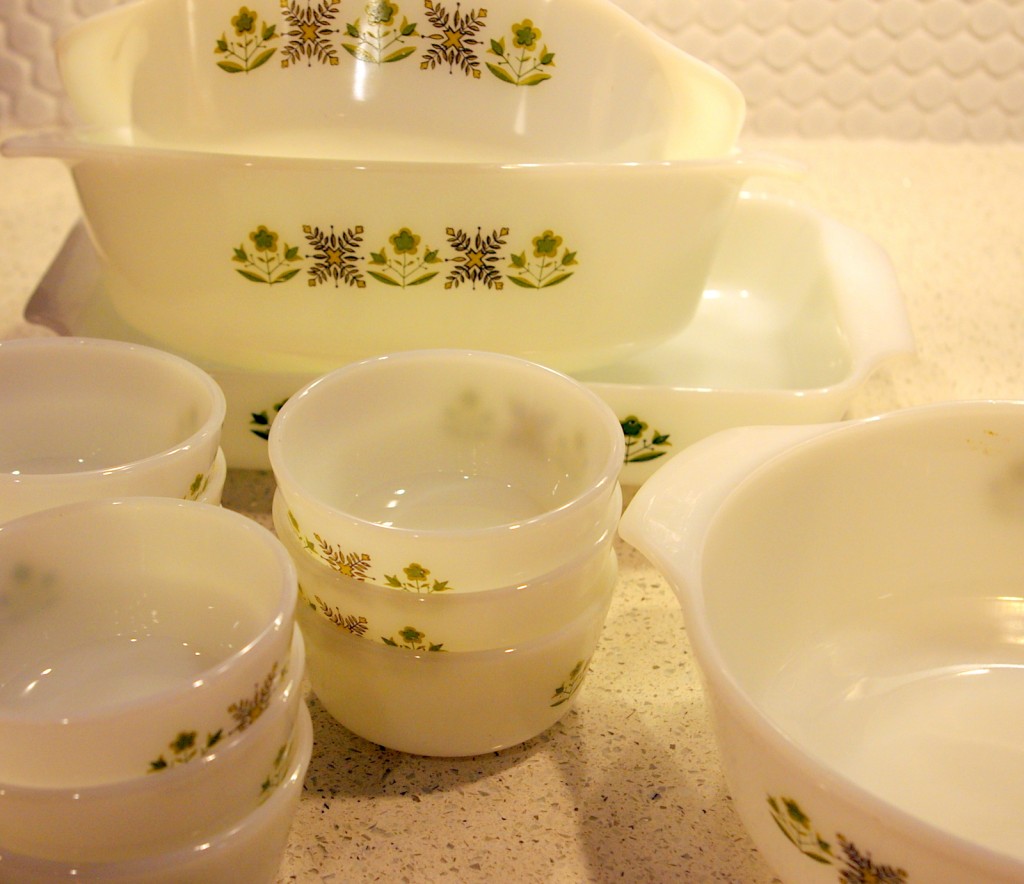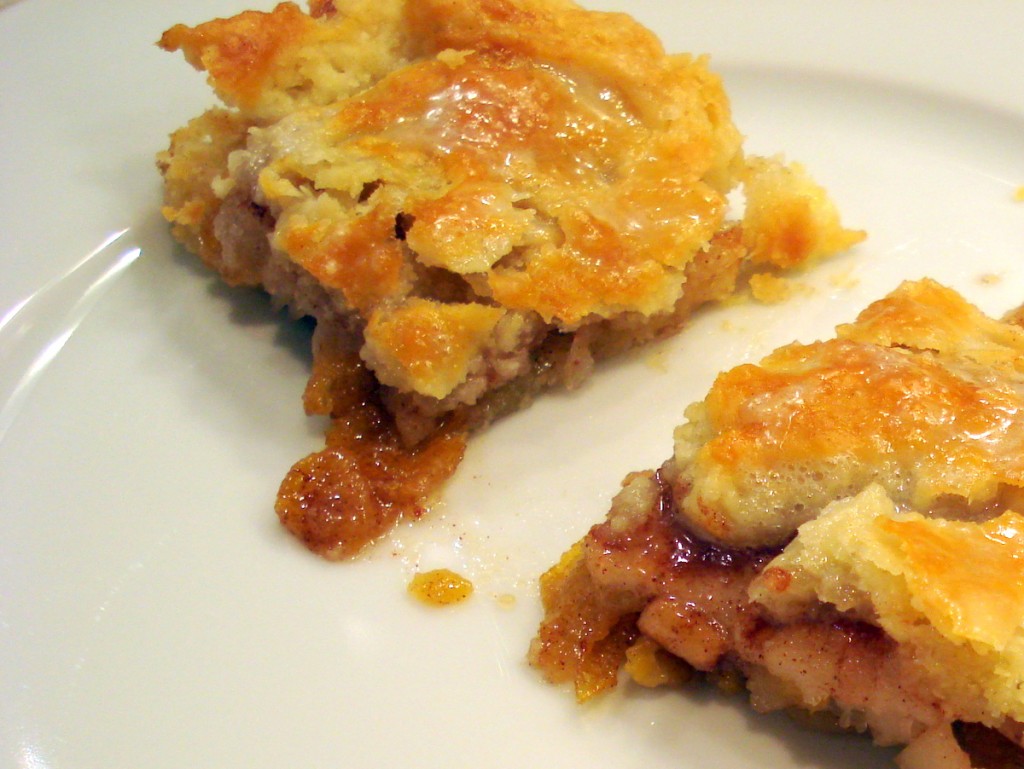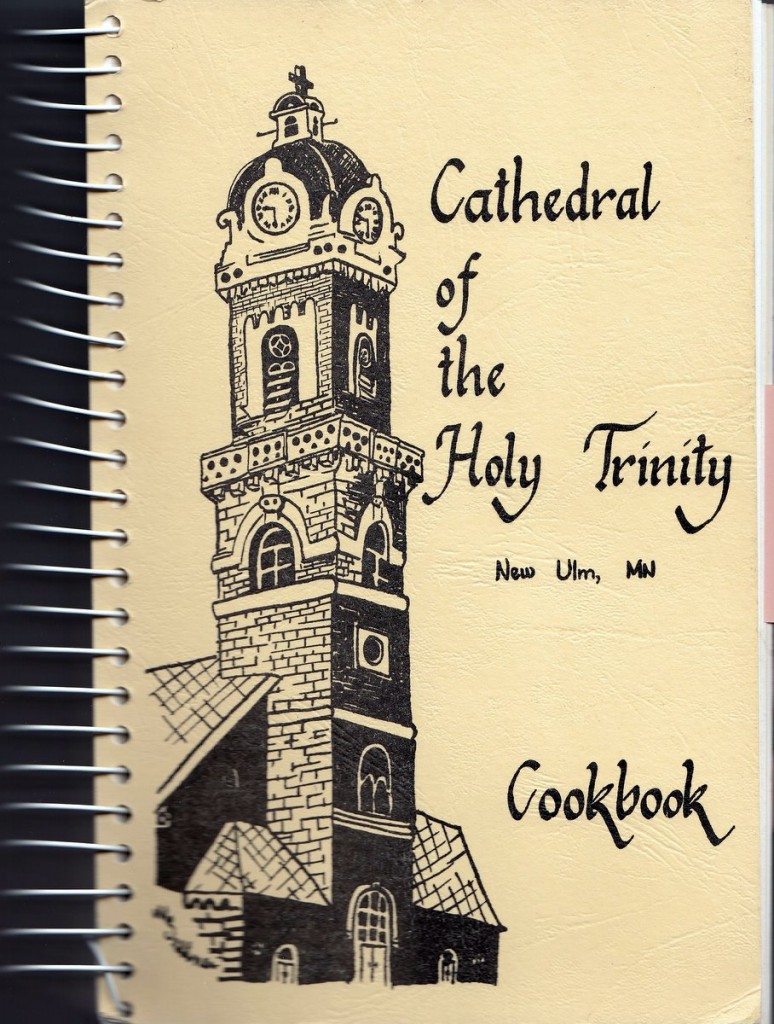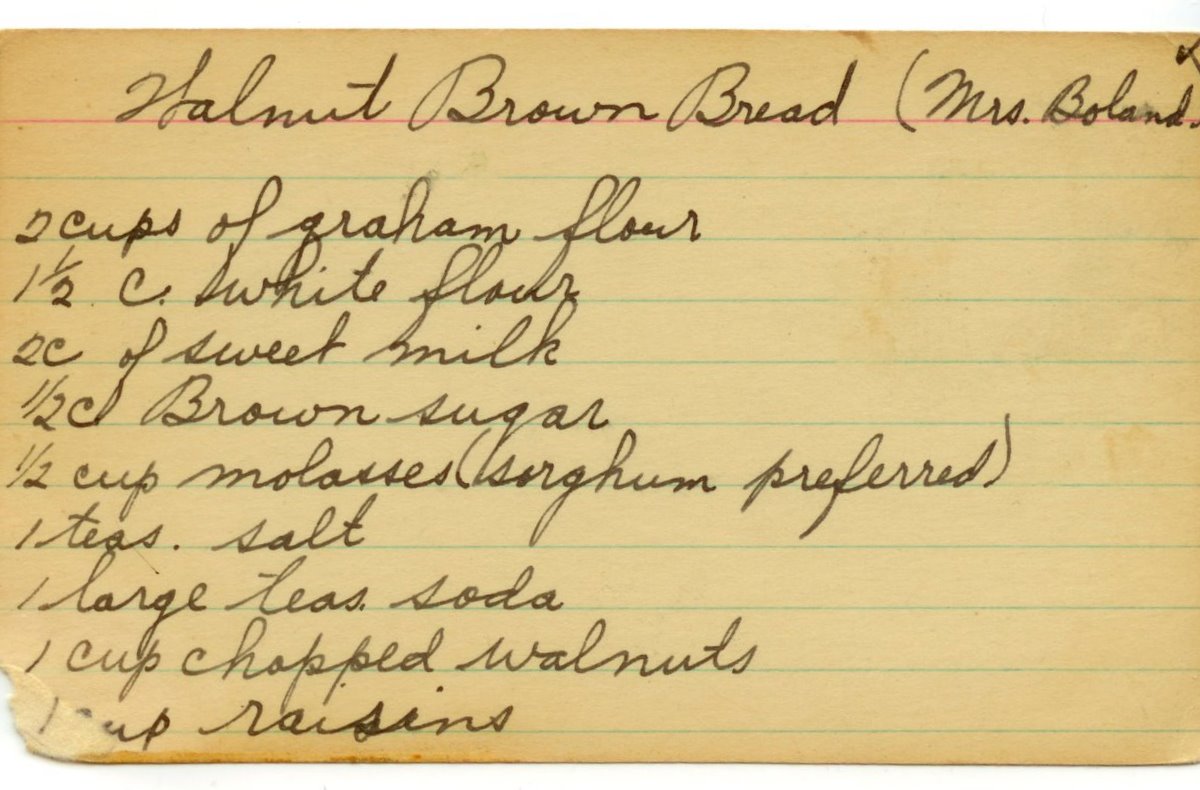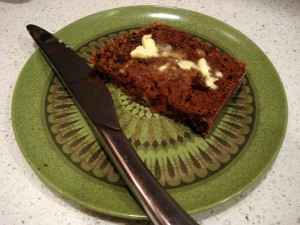Posts in Category: Mid-West
The Story of Our House
A few of you commented on the ramekins I used in our last post. Â Where did they come from, you ask? Â They actually came from our house. Â Kevin and I moved to Seattle from Southern California almost two years ago. Â In the autumn of 2008, we started looking for a house, but–being the picky people we are–we couldn’t find one that was perfect. Â During this time, we drove past an estate sale and wandered in. Â The house was a wreck: it hadn’t been updated in 30 years, everything was threadbare and dirty, and I remember saying to Kevin “well, at least we’re not looking at this house. Â (Famous last words, trust me.) Â I found a box of Anchor Hocking casserole dishes and ramekins at this estate sale in the Meadow Green pattern, which was produced between 1967-1977.
To make a long story short, we bought the house a few months later and it became our threadbare and dirty house! Â Originally, Kevin and I were searching for a ‘time capsule’ house that had vintage style and didn’t need much work. Â Sadly, they were out of our price-range, so we had to make some major renovations to the house in order to turn it into a place we’d be proud to call home. Â But that’s the subject of another post–back to the ramekins!
An Apple A Day
It took us a long time to choose a recipe from the Cathedral of Holy Trinity’s Cookbook, which is featured in our previous post. Â Since we made a casserole last week, we decided on another mid-western staple: the bar cookie. Â Kevin has been super-busy at work lately and I know the other engineers could use some treats to help them get through their long days, so cookie-bars seemed like a perfect choice. Â Moreover, we had some apples that needed a new lease on life, so we decided on Apple Bars! Â I was a little skeptical about the ingredient list (mainly the Corn Flakes), but they turned out perfectly!
Cookbook Spotlight
I love my collection of vintage cookbooks. Â I especially enjoy paging through the spiral-bound cookbooks that are printed by community and church groups. Â I find most of these at thrift stores for just a few dollars and they always have great local dishes. Â The cookbook I’m featuring in today’s post is produced by the Parish Council of Catholic Women of the Cathedral of the Holy Trinity in New Ulm, Minnesota. Â This cookbook has many recipes that reflect New Ulm’s rich German heritage, including one for Essigkraut that I can’t wait to try. Â There’s also many recipes dedicated to Minnesota’s famous casseroles or hot-dishes!
Later this week, I’ll be posting a recipe from the cookbook, so check back!
Mrs. Boland’s Walnut Brown Bread
For our inaugural post, I’m choosing a recipe from my husband’s grandmother, who hails from Minnesota.  I found this one amongst a stack of 3×5 cards with recipes for various cookies, desserts, and breads that his mother saved from the trash when they were cleaning out his grandmother’s house a few years back.  Kevin’s grandmother is a practical woman who grew up in South Dakota and spent most of her adult life in Minnesota.  Judging by the title, the recipe was given to her by a Mrs. Boland.
